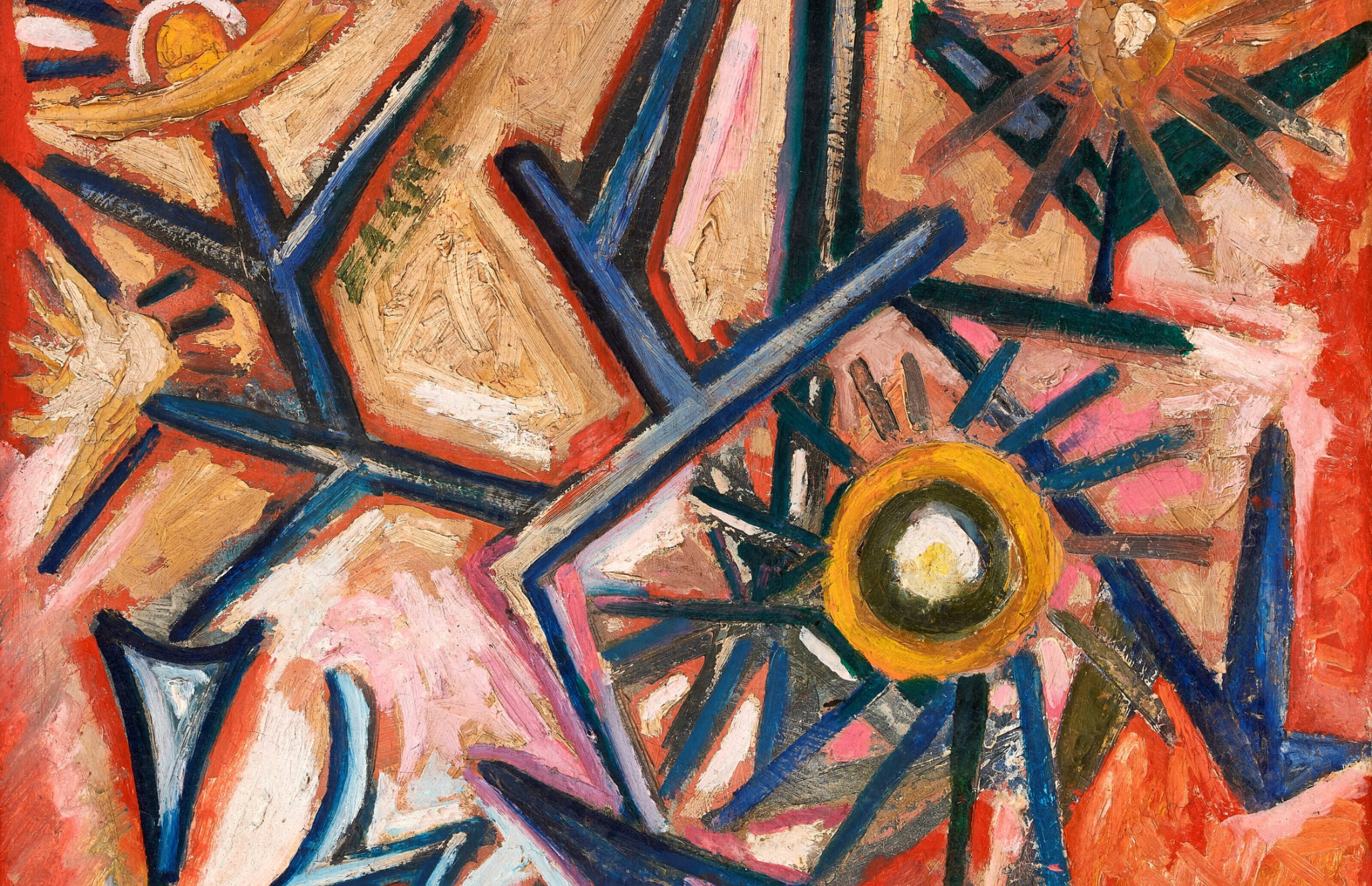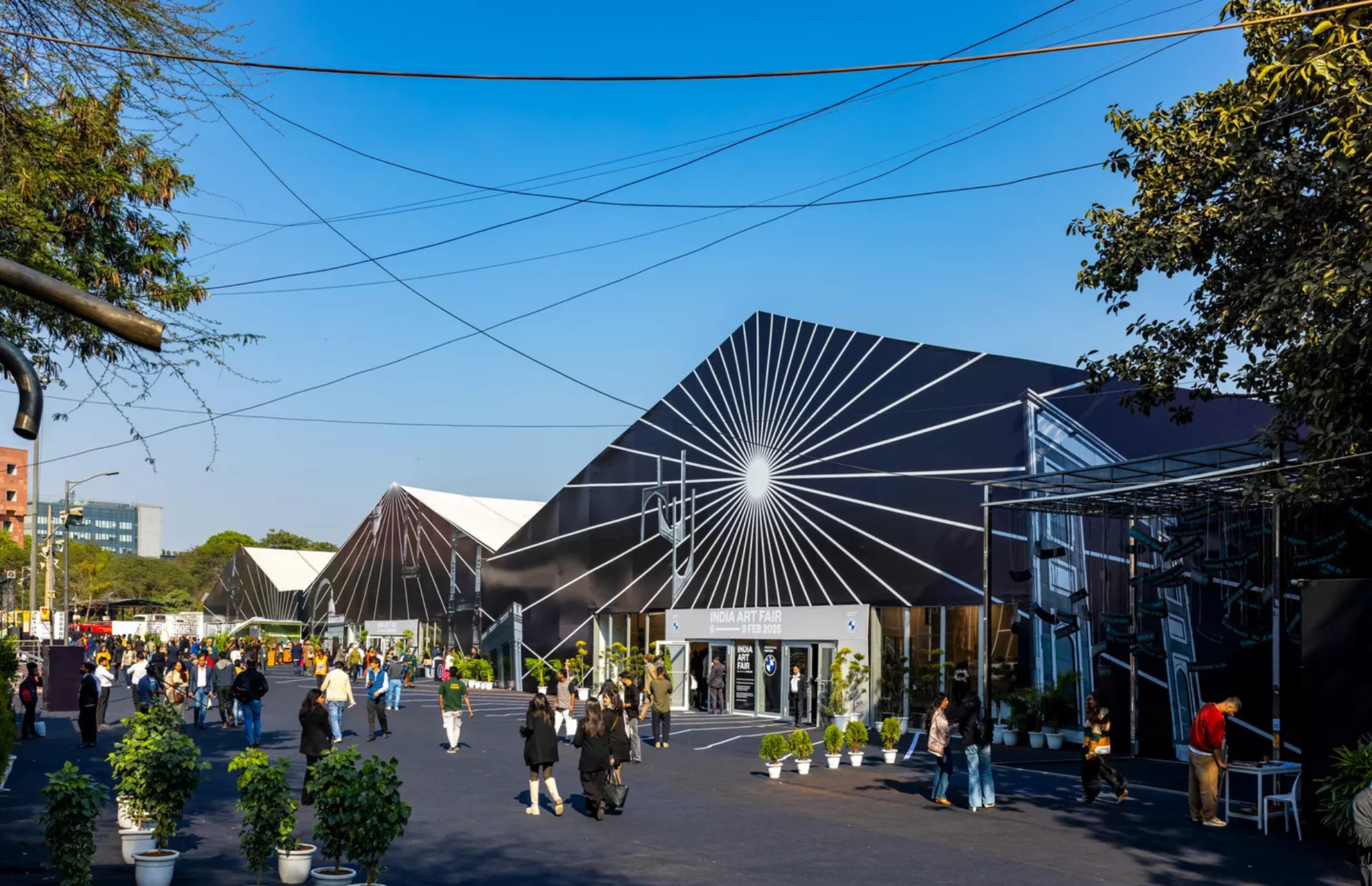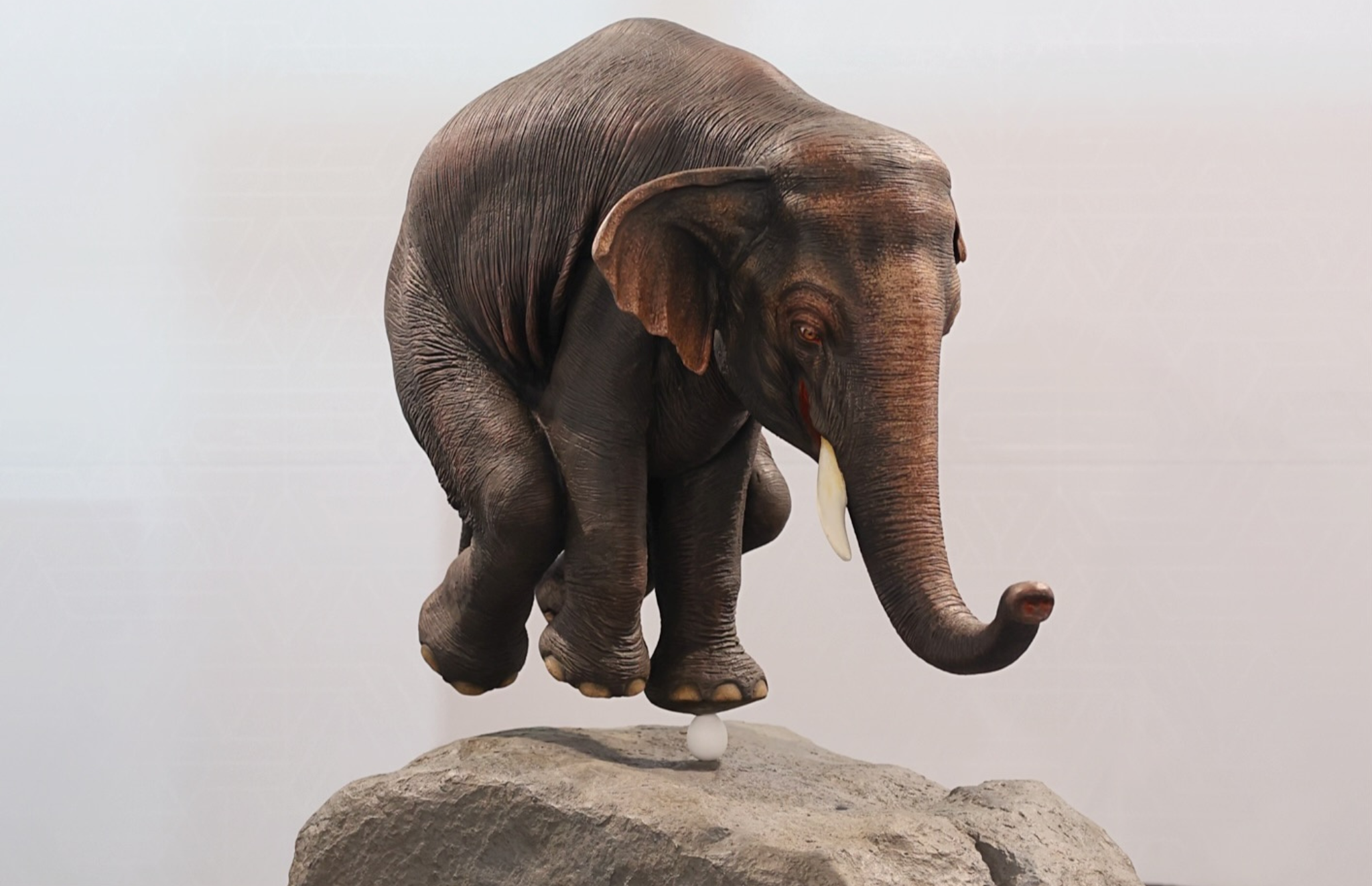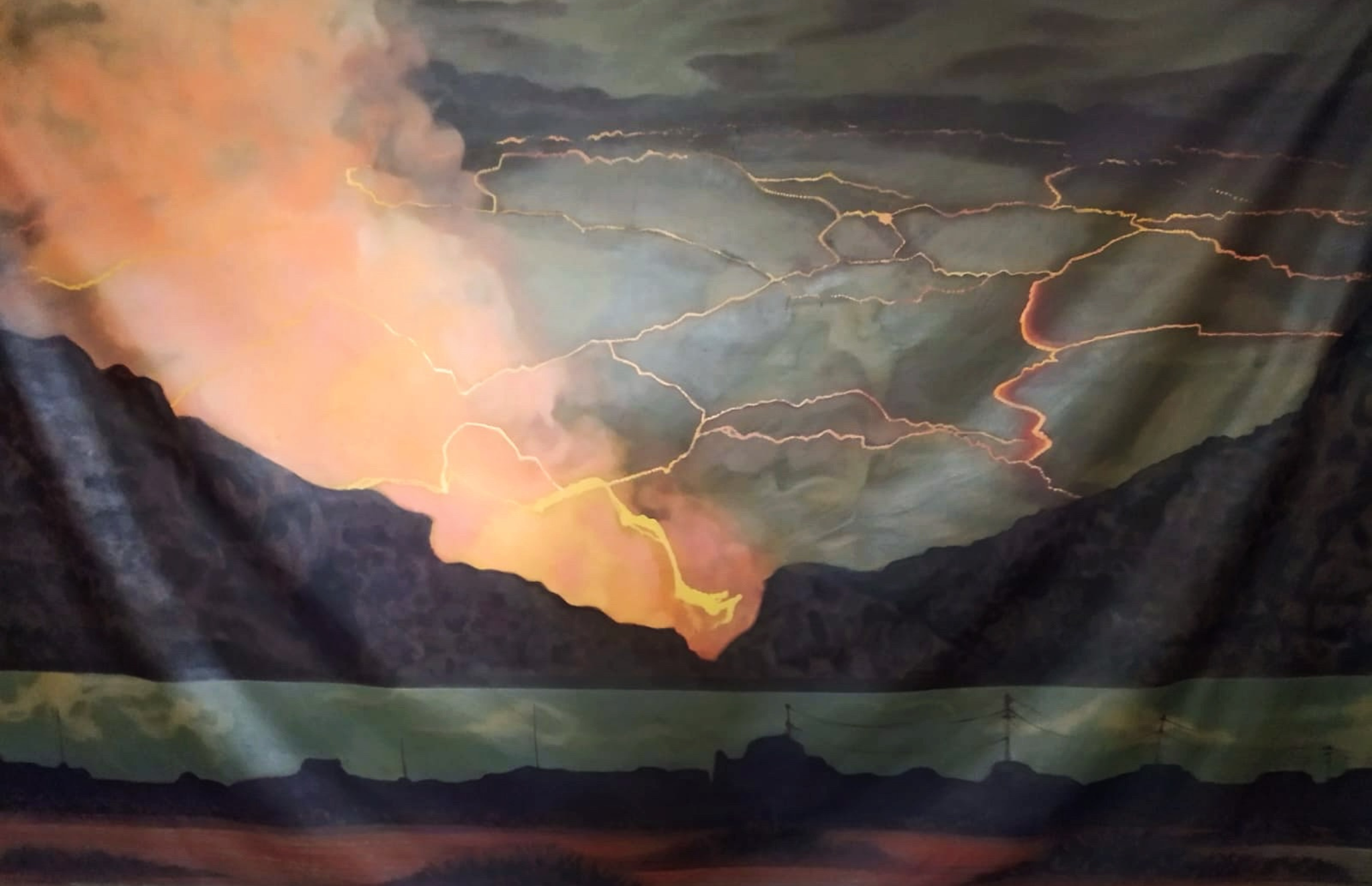THE MAKERS OF MEMORY
‘Riyaz’ , an exhibition hosted by Iram Art Gallery and curated by Ina Puri, creates a tapestry over elements of time and space. It has been observed by philosophers and critics alike that memory is one of the defining characteristics of the human species. Creating histories and archives is an important occupation, where the ‘conservation of memory’ is often dependent on documentation. After their exhibition at VOLTA Art Fair in Basel, Switzerland, the gallery makes its debut in India with a group exhibition showcasing multidisciplinary artists under one roof at Bikaner House in Delhi.
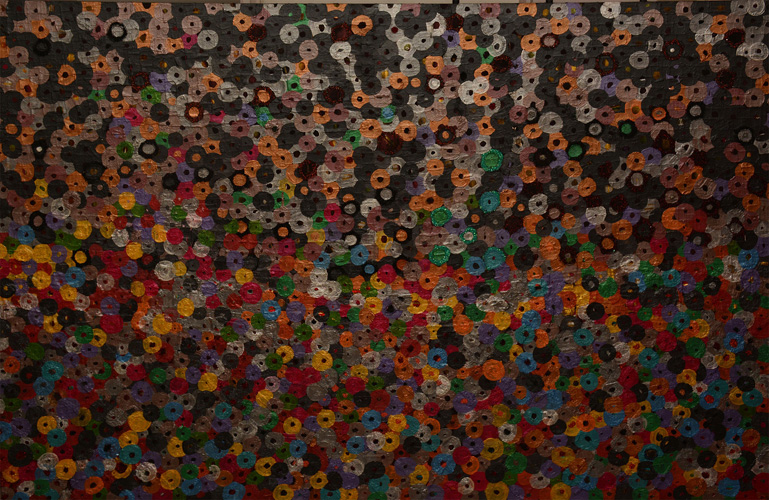
‘Riyaz’ is an “expansive, ambitious project” that aims to weave a mosaic through the aforementioned elements beautifully, and thus, furthers the legacy of these torchbearers who ushered a new wave of art. This initiative presents a newfound dimension of documentation and heritage by linking together the artistic practices of some of the most well-known artists in the country across generations and regions.
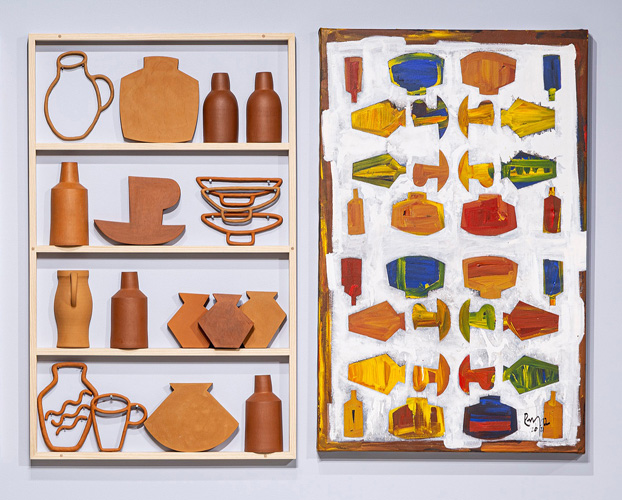
The exhibition features a range of artists from modern masters to emerging contemporary voices to showcase works in diverse mediums. The sheer variety of expression helps create a narrative that is inclusive and tactful in its approach. Maestros like K G Subramanyan are now indicative of a recent ‘past’ while current veterans include names like Manu Parekh, Amit Ambalal, Mona Rai, Madhvi Parekh, P Daroz, Ranbir Kaleka, Naveen Kishore, and Waswo X Waswo.
The next generation to follow comprises artists like Jagannath Panda, Jayasri Burman, Dipalee Daroz, Ankon Mitra, Harshavardhana, Riyas Komu, Manisha Gera Baswani, Megha Joshi, Debasish Mukherjee, and Narayan Sinha.
Additionally, an even younger generation includes names of extraordinaires like Remen Chopra, W. Van Der Vaart, Purvai Rai, Reyaz Badaruddin, Bapi Das, and Deepa Parekh, the latter two will be showcasing textile and embroidery art at the exhibition which has been opportunely sectioned off into various segments, which is more to do with the plethora of mediums used rather than historicity.

In photography, Naveen Kishore’s photographs from his Performing the Goddess series will be on display along with Manisha Gera Baswani’s series on artists and their studios. One aspect documents a gender-fluid performance while the other aesthetically captures the creation of art by established artists belonging to different generations and genres.
On-site installations by artists Megha Joshi, Debashish Mukherjee and Ankon Mitra are intended to display works on various and unexpected mediums. Joshi’s incense sticks and cotton wicks mounted on acrylic plywood art are accurately named Sycretic Ritual, indicative of the coming together of different elements to proprietate the divine. Mukherjee’s portrait of an oral history project on mapping, ‘lost homes‘ is made with cotton, thread and elastic.


Mitra employs two distinctive techniques in all his sculptures – Origami (folds only) and Kirigami (cuts + folds). The folding of boats, which is a ceiling installation made of brass, aluminium, hand-woven textiles, French Cordenon cardstock, and nylon wires creates a very dynamic and interesting assemblage of materials. Mitra engages with this variety of materials to bring to his artwork a very nuanced aesthetic experience that is not necessarily narrative in nature but evocative of experience and nostalgia. The sheer physicality of the work creates a sense of engagement that goes beyond casual viewing and enthrals one.
Narayan Sinha reimagines life through found mechanical mediums; small interventions create life-like objects from cast-away metal scraps from the series Firelight Extension, while his Faces are made from aluminium, brass, fabric and iron.

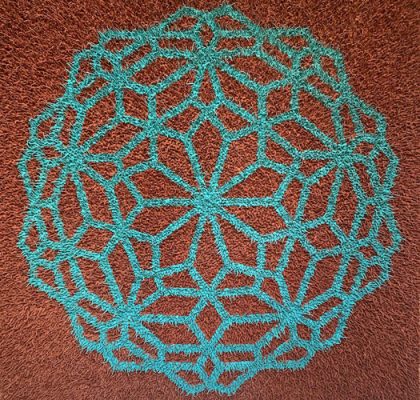
P Daroz’s series of amphora shapes, Witnessing Time, aims to draw our focus onto the notion that time is an ongoing, ever flowing river, and that the past, present, and future cannot be conceived as separate and distinct entities. Dipalee Daroz explores this two-fold dimension of embodiment and perception, which plays out as much within the confines of the objectified representation as between the discerning gaze of the viewer and the altered projection with her sculpture, Cultured organic.
The paintings include Manu Parekh’s series on Assi Ghat, Madhvi Parekh’s Village Opera, Jayasri Burman’s Chandrakala, Amit Ambalal’s Mother Care, Mona Rai’s Untitled, mixed media on canvas, Ranbir Kaleka’s Fantastical Posthuman Concordia and Knowledge of Nature made on Duratrans print, mounted on light film, and S Harshavarhana’s Untitled, mix media on canvas.

The sculptural pieces feature Jagannath Panda’s Where did my horse go? – II, a work made from acrylic, fabric and glue. Riyas Komu’s sculpture, Salt & Pepper – II is made from recycled wood & automotive paint. It is rooted in the act of walking in ‘search for truth’, a detour towards ‘transformative moorings from being ritual, meditative to the extremes of political imagination’. Reyaz Badaruddin’s Still Life is made from red earthenware and is purely an aesthetic celebration of objects, with no underlying political narrative.
Revitalising diversity, ‘Riyāz’ hopes to create an experience that collectively bridges the gap between memory and documentation through artworks across disparate mediums, that are eclectic and immservie. It strives to bring together the contrasting artwork in narratives which fuses myth with memory, fact with fiction, history with tradition, and fantasy with documentation.
“Underlined with poetic resonances, ‘Riyāz’ is about fragments of histories yet to be written, about geographies that defy man-made borders, traversing to lands unseen,” as Puri warmly concludes.
The exhibition opens on August 31 at Bikaner House, New Delhi and is on till 4 September 2022.
Text by Georgina Maddox
Images courtesy: Iram Art Gallery
Find out more about the exhibition:
https://www.voltaartfairs.com/blog/meet-the-gallery/harssh-shah
https://www.vervemagazine.in/arts-and-culture/artist-and-the-environment-bapi-das


